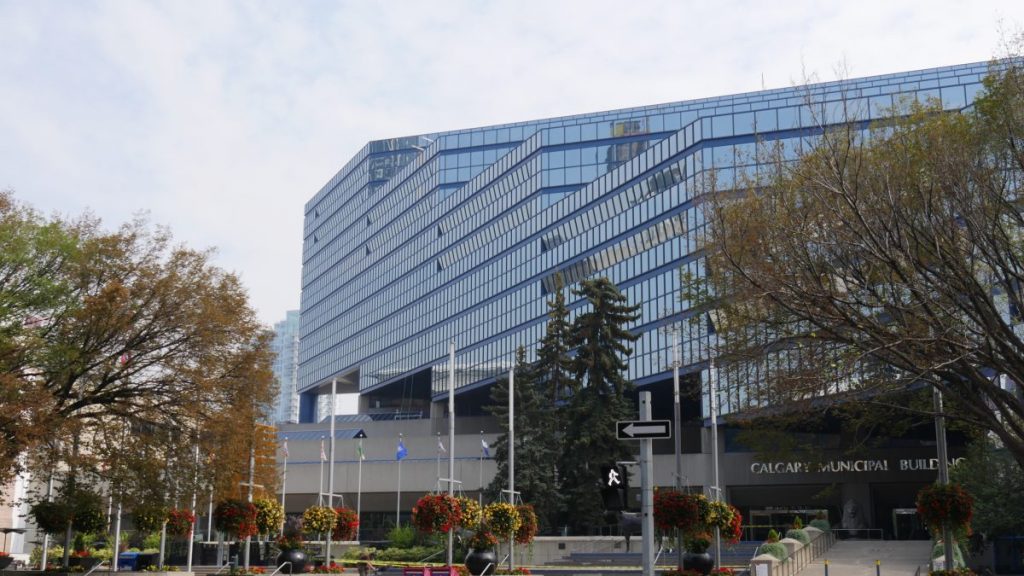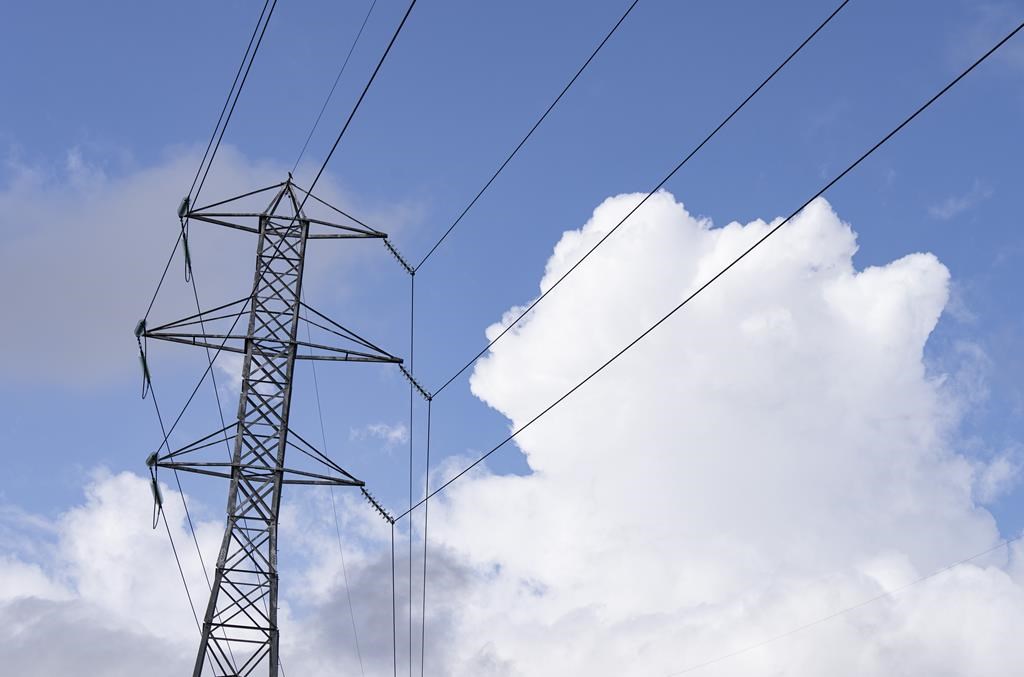Hurricane Larry wipes out power, trees across St. John’s; people urged to stay home
Posted Sep 11, 2021 7:33 am.
Last Updated Sep 11, 2021 1:43 pm.
The City of St. John’s is asking residents to stay home out of it – as the Newfoundland and Labrador saying goes – so crews can clean up the torn branches, downed power lines and scattered debris flung about the streets by hurricane Larry.
The storm made landfall as a Category 1 hurricane along the southern coast of the island at 11:45 p.m. Atlantic time on Friday, bringing sheets of rain and sustained winds of 130 km/h across the Avalon Peninsula, which includes the provincial capital of St. John’s. Wind gusts reached at speeds as high as 182 km/h, according to measurements at the Cape St. Mary’s Lighthouse.
The winds resulted in massive storm surges which brought waves up onto the road in places such as St. Vincent’s, a popular spot to watch whales along the southern Avalon.
Pictures shared on social media show fishing stages in Southern Harbour, which sits on a thin stretch of land connecting the Avalon Peninsula with the rest of the island, decimated by the pounding surf.
In St. John’s, the streets were lined with branches torn from trees, debris pried from houses and, in the Rabbittown neighborhood, a tossed-about easy chair.
A small crowd gathered around Mary Queen of Peace Elementary School, shaking their heads slowly as fragments of the school’s shredded roof whipped around in the remaining winds. A large part of the roof was blown clear off the building and lay in a heap of siding and nail-riddled boards some distance away.
Hydro pole in bad shape on Duckworth in St John’s pic.twitter.com/vQ0QdgounB
— DMJHodge (@DmjHodge) September 11, 2021
https://twitter.com/Maria38145259/status/1436639054934810626
#HurricaneLarry has made landfall in Newfoundland!
This is the first time in my life I’ve seen lightening plus sub stations light up the sky in a hurricane. Power in centre city is out and we aren’t out of this yet. ????⛈????
Stay Safe everyone! #nlwx @wxcentre @weathernetwork pic.twitter.com/fUI86KdY7B
— ???????????????? ???????????????????? ???? (@GregSmithNL) September 11, 2021
Entire back section of school roof is gone #nlwx #hurricanelarry pic.twitter.com/p0PLoYNVgW
— Jordan On Air (@JordanKOnAir) September 11, 2021
Mayor Danny Breen pleaded with residents to stay home on Saturday to give city crews a chance to clean up fallen branches and repair the many streetlights now dangling from their wires.
“Hurricane Larry caused a significant amount of tree and property damage throughout our city,” Breen said at a news conference. Still, he said, “it could have been a lot worse.”
Roger Hounsell, deputy chief of operations with the St. John’s Regional Fire Department, said his team received 37 calls over the course of the storm, mostly from people needing help with fallen power lines, trees and branches.
So far, he said, there were no reports of injuries.
As of 1:00 p.m. Saturday, nearly 30,000 people across the Avalon Peninsula were still without power, Newfoundland Power’s website said.
Earlier in the day, one of the only spots with lights on in the downtown area was a Tim Horton’s near the Rooms provincial art gallery, and the lineup to get a morning coffee snaked through the restaurant and out the door. Brandon Snook was outside the coffee shop with his infant son, Myles, as his wife grabbed a few cups inside. They didn’t have any power to make their own, he said.
Myles slept through the entire night, Snook said, clearly impressed. “My sister, her little little one lost her play house,” he said. “It got smashed up against the house in about two million pieces.”
His own house made it through OK, he said _ just a bit of siding peeled loose.
An empty building nearby in the Rawlins Cross intersection wasn’t so lucky; several of its traffic-facing windows were shattered in their frames, leaving the inside of the building completely exposed.
Up the street, parts of the green iron fencing surrounding the Basilica Cathedral had fallen down and several of the massive structure’s windows were missing.
Breen said he expects life in St. John’s to return to normal on Sunday.
“If this had been during the day, during the work day or the school day, I think we would have had much more challenges,” he said.
Larry made landfall as a Category 1 storm in eastern Newfoundland, arriving near South East Bight around midnight local time, according to the National Hurricane Centre in Miami.
The storm crashed inland on the western shores of Placentia Bay on the Burin Peninsula with maximum sustained winds of 130 kilometres per hour, bringing heavy rain and pounding seas.
The agency says wind gusts topping 180 kilometres an hour were observed across southern exposed and elevated areas of the southern Avalon. A peak gust of 145 kph was recorded at St. John’s International Airport.
A notable storm surge was also reported over portions of the Burin peninsula and southern Avalon, with the tide at Argentia showing a peak water level of about 150 centimetres higher than normal. About 30 millimetres of rain fell in a very short period of time at the centre of the storm.










